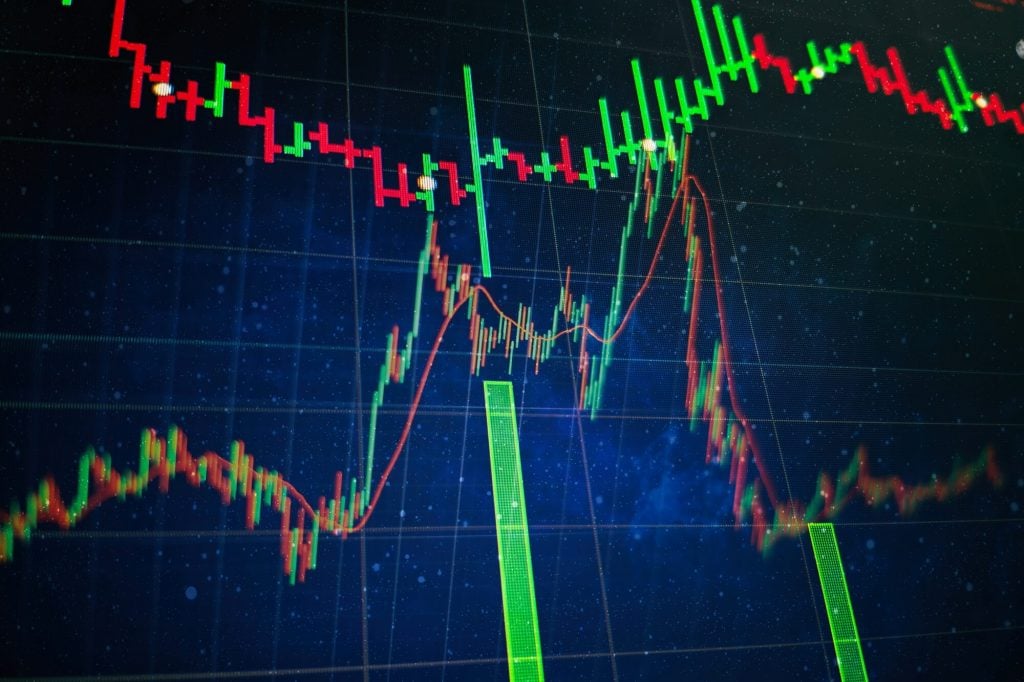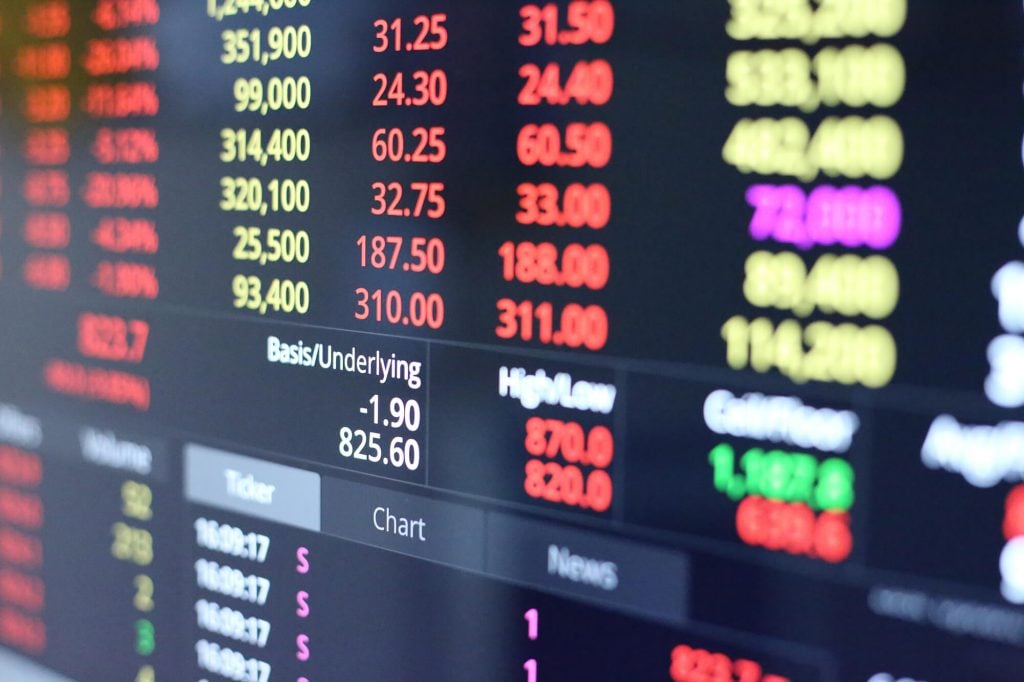
Everybody loves a bonus. Investing in stocks can pay off long-term, but in the short-term, investors can expect to receive stock dividends paid on a per-share basis.
Some analysts believe that as our economy improves, more companies will be offering dividends, which means that investors can expect to see more money in their hands.
Sounds great, right? Well, there are pros and cons to dividends, and it may be helpful to consider the risks and benefits of dividend stocks before you make any investment decisions.
But first, what are dividends? How do stock dividends work? In this article, we’ll explore these questions as we help you to navigate the world of stock dividends.

What Are Dividends? An Overview
When a company performs well, they can distribute a portion of their profits to their shareholders, which basically acts as a bonus to investors. Usually, these kinds of dividends are paid quarterly, though they can also be paid annually.
Keep in mind that not all companies pay dividends. Even high-performing stocks like Amazon don’t offer investors any dividends. Always check to find out whether a stock offers dividends before making your investment.
Why Do Stocks Pay Dividends?
That raises an interesting question: Why do stocks pay dividends to their shareholders? It’s not charity, of course!
Companies share their profits for two reasons. First, regular dividends can keep current investors happy, which helps them stick around. Second, dividends can be a selling point for new investors, enticing them to invest in the company.
How Do Dividends Work?
How do stock dividends work? There are several approaches to paying dividends:
Residual
When a company earns a profit, it can use this money to invest in improvements or new projects. The dividend distributed to shareholders is based on the residual, the money left over after the company has made its investments.
The advantage for the company is that it allows them to use its profits to make improvements to the business. The disadvantage for the shareholder is that it means that they aren’t guaranteed a regular, stable dividend.
Stable
With a stable dividend, companies pay a dividend every quarter or year regardless of the company’s performance. How is this possible? Most companies base their dividend on long-range forecasting, so they pay their shareholders a percentage of what they expect to earn.
While this sounds risky, it can be a great strategy for companies to offer stability to their investors. It can also reduce uncertainty for other investors who might be interested in investing in the company.
Hybrid
In a hybrid approach, companies can offer a stable dividend to their investors, but then offer an extra dividend during seasons in which the company performs at or above internal benchmarks. This gives investors the stability of the stable model, along with the additional bonus of the residual approach.
Special Dividends
Special dividends are given to shareholders on a non-recurring basis. If a company has extra capital it has no use for, the company can distribute the excess to shareholders as a one-time bonus.
Preferred Dividends
Preferred dividends are paid to individuals that own preferred stock. What is preferred stock? Preferred stock functions a bit more like a bond than a traditional stock, and preferred stockholders can have different levels of privilege compared to other shareholders.
For instance, preferred stockholders might not participate in shareholder meetings, but they are usually given greater priority if a company goes bankrupt and has to liquidate its assets. Preferred dividends are given quarterly, but they are typically fixed.
How Do Dividends Work for Shareholders?
For shareholders, dividends come as an added bonus for investing in a particular company. But how do stock dividends work for individual shareholders?
Here in the U.S., dividends are usually paid in cash. These payments are made on a per-share basis, which means that if a company offers a dividend of 25 cents per share, an investor with 100 shares would receive a dividend of $25.00.
In other cases, dividends can be paid as an increase in your total stock. For example, if you own 100 shares of stock in a company that offers a 5% dividend, you would end up possessing 105 shares of the company’s stock.
Dividend Reinvestment Programs (DRIPs)
Shareholders often have the option of participating in a dividend reinvestment program (DRIP). This allows them to reinvest their dividends back into the company. Best of all, DRIPs usually allow shareholders to purchase stock at a discount.

How Does a Dividend Work? Comparing Between Companies
How can an investor learn to more critically evaluate dividends and compare them to other companies? There are three different methods you can use to evaluate dividends:
1. Dividend Yield
To calculate the dividend yield, simply divide the company’s annual dividend by its stock price, then multiplying by 100 to convert the figure into a percentage.
For example, a stock whose price is $25.00 per share with a dividend of 50 cents per share will have a dividend yield of 2% ($0.5/$25.00).
The reason that this measurement is helpful is that it lets you compare stocks a bit more directly. For instance, a company that costs $5.00 per share and offers an annual dividend of 10 cents per share will offer the same dividend yield as our previous example—2%.
Companies can either increase their dividend yield by decreasing their stock’s share price or increasing their annual dividend. Unfortunately, offering increased dividends is not always sustainable for a company. If a stock is offering anything over a 4% dividend yield, it might not be able to maintain a stable dividend in the long-term future.
2. Dividend Per Share (DPS)
The dividend per share (DPS) refers to the amount of the dividend for every share of stock when measured over a specific time frame. This is usually expressed as a number per share (e.g., $0.10/share).
This value will be most meaningful when monitored over time. For instance, a company whose DPS changes from $0.05/share to $0.07/share has demonstrated its ability to grow its dividends over time, which means that it could be a better investment than a company whose dividends remain fixed.
3. Dividend Payout Ratio
The dividend payout ratio refers to the portion of a company’s net income that is paid in the form of dividends. For example, if a company pays all of its income in the form of dividends, the dividend payout ratio would be 100%.
A higher dividend payout ratio may sound ideal, but industry experts caution that distributing too much income in the form of income can prevent a company from investing in its own infrastructure. It could also put them in a dangerous position during a leaner financial period.
You might want to look for companies whose dividend payout ratio is 80% or below. This ratio can typically be found on financial or online brokerage websites. Not to brag, but Gorilla Trades offers a wealth of data that you can use while researching stocks — we even offer methods of monitoring your investments over the long term.
Do I Need Dividends?
Dividends will never offer the same level of reward that comes from investing in a company’s stock directly. But it’s nice to have a steady income stream from your investments.
Dividends are usually paid by companies that are firmly established, so dividend stocks can often offer more stability than younger companies that are using their profits to grow their business.
The Potential Risks of Dividends
Don’t simply assume that dividend stocks are invariably the way to go. There are several things to consider before you put your money into dividend stocks.
Not All Stocks Pay Dividends
First of all, not every stock pays dividends. Even well-established companies don’t necessarily provide dividends to their shareholders.
Dividends Aren’t Guaranteed
Dividends are paid at the company’s discretion. If a board of directors votes against the distribution of dividends, there’s no contractual or legal obligation for the shareholders to receive anything.
High Dividends May Reflect Poor Company Stability
High dividends can make shareholders happy in the short term, but what happens when a company fails to save money for the rainy season? Companies that pay high dividends might not have the stability to weather market fluctuations, making them a poor investment overall.
Companies that Pay Dividends Don’t Always See Rapid Growth
Startups tend to experience the most dramatic growth. If you’re a risk-taker, it might be a greater strategy to invest in small startups rather than established industry giants.
These small startups don’t offer the dividends or stability of well-established companies, but they may offer a “ground floor” for investors that are willing to take a chance on seeing a startup take off.

Experience the Benefits of Gorilla Trades
At Gorilla Trades, we strive to be one of the internet’s greatest resources for investing. Our members have access to some of the greatest educational materials and tutorials around, as well as stock picks and information delivered straight to their email or phone.
Give us a try by signing up for our 30-day free trial today!
